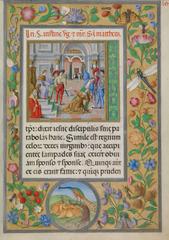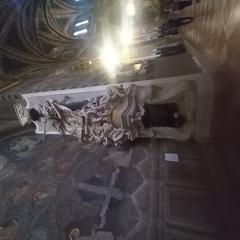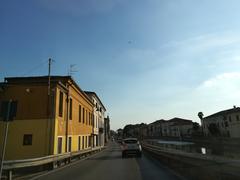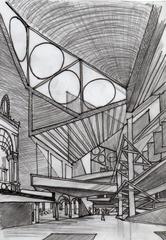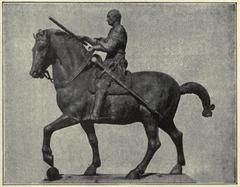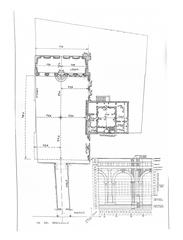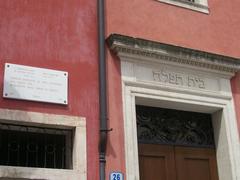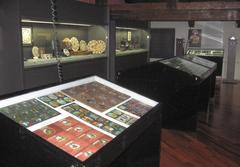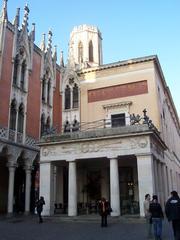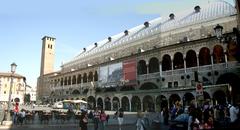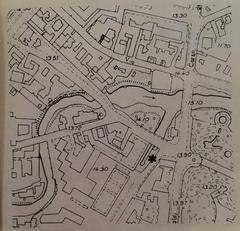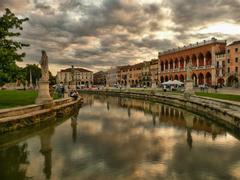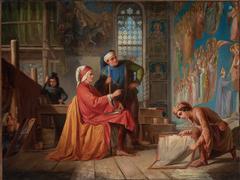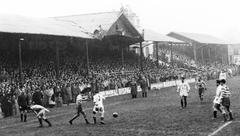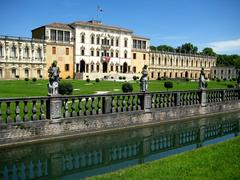Piazza Cavour Padua: Visiting Hours, Tickets, and Historical Sites Guide
Date: 14/06/2025
Introduction: History and Cultural Significance
Piazza Cavour is one of Padua’s most emblematic public squares, standing as a vibrant testament to the city’s rich historical narrative and contemporary spirit. Named after Camillo Benso, Count of Cavour—a leading architect of Italian unification—the square bridges Padua’s medieval core with its modern urban expansions. It is both a cultural hub and a lively social space, reflecting Padua’s commitment to honoring its heritage while embracing innovation.
The square’s architectural landscape is notably marked by the modernist Galleria Cavour, designed in the 1950s, which harmonizes with the surrounding neoclassical and Renaissance facades. This blend is a physical representation of Padua’s philosophy: respecting the past while integrating the new. Piazza Cavour is open 24/7, welcoming visitors free of charge and offering easy accessibility, including for those with disabilities. Its central location and proximity to landmarks—such as the Scrovegni Chapel, Palazzo della Ragione, Piazza delle Erbe, and more—make it an ideal starting point for exploring Padua’s cultural treasures (rossiwrites.com, livetheworld.com, venicetraveltips.com).
Table of Contents
- Historical Evolution of Piazza Cavour
- Architectural and Urban Significance
- Visitor Information: Hours, Tickets, and Accessibility
- Cultural Role and Community Life
- Notable Events, Photographic Spots, and Nearby Attractions
- Integration with Padua’s Urban Experience
- Practical Tips and Local Etiquette
- FAQ
- Conclusion
- References
Historical Evolution of Piazza Cavour
Piazza Cavour’s story is intertwined with Padua’s urban and cultural development. The square is dedicated to Count Cavour, a central figure in Italy’s 19th-century Risorgimento. Its location marks the transition between the city’s medieval roots and modern growth, symbolizing both continuity and evolution.
After WWII, the area underwent significant transformation. The construction of Galleria Cavour in the 1950s, led by engineer Giorgio Pizzighini, altered the urban landscape—replacing war-damaged structures with a modernist design and creating a vital passageway that remains a focal point today (livetheworld.com). The square has since hosted numerous civic gatherings and continues to play a central role in Padua’s cultural life.
Architectural and Urban Significance
Piazza Cavour is defined by the juxtaposition of the modernist Galleria Cavour with neoclassical and Renaissance buildings. The square’s design facilitates pedestrian movement and serves as a connector between major streets and adjacent squares. The central monument—a bronze statue of Count Cavour—dominates the space, acting as a visual and historical anchor (ibnbattutatravel.com).
Surrounding buildings feature arcaded walkways, historic cafés, boutiques, and civic offices, many with original facades, balconies, and decorative details characteristic of northern Italian urban design. The careful integration of new and old has made the square a model of respectful urban renewal.
Visitor Information: Hours, Tickets, and Accessibility
- Visiting Hours: Piazza Cavour is an open public space, accessible 24/7. The Galleria Cavour typically operates from 10:00 AM to 7:00 PM, but hours may vary for exhibitions or events.
- Tickets: Access to the square and Galleria Cavour is free. Some special exhibitions inside the Galleria may require tickets; check event listings for details.
- Guided Tours: Many walking tours of Padua include Piazza Cavour. Book through local operators or official tourism offices.
- Accessibility: The entire area is wheelchair-friendly, with smooth paving and curb cuts. Public transport nearby is also accessible.
- Nearby Facilities: Public restrooms are available in adjacent cafés and cultural institutions (a small purchase may be needed for access).
Cultural Role and Community Life
Piazza Cavour is a lively social hub, hosting art exhibitions, cultural events, and public lectures throughout the year (livetheworld.com). The square is especially vibrant during the traditional Italian passeggiata (evening stroll), with locals and visitors mingling at outdoor cafés and bars.
The square’s proximity to important sites—such as the Basilica of San Petronio, the Scrovegni Chapel, and the historic markets of Piazza delle Erbe and Piazza della Frutta—makes it a focal point for both cultural engagement and daily life. The dynamic blend of students, professionals, and tourists gives the space a unique energy, day and night.
Notable Events, Photographic Spots, and Nearby Attractions
- Events: Piazza Cavour is the setting for public celebrations, open-air concerts, and seasonal festivals, especially during major Italian holidays (ibnbattutatravel.com).
- Photographic Spots: The central statue, juxtaposed with the surrounding architecture, is particularly photogenic at sunset and during golden hour.
- Nearby Attractions:
- Scrovegni Chapel (UNESCO World Heritage site, renowned for Giotto’s frescoes; tickets required)
- Palazzo della Ragione (medieval town hall and market)
- Piazza delle Erbe and Piazza dei Signori (historic squares and markets)
- Caffè Pedrocchi (historic literary café)
- Prato della Valle (one of Europe’s largest public squares)
Integration with Padua’s Urban Experience
Centrally located, Piazza Cavour is easily reached on foot or by public transportation. Bus and tram stops are nearby, and the railway station is about a 15-minute walk away. The square serves as a convenient waypoint for exploring Padua’s historic core and is surrounded by pedestrian-friendly streets.
Practical Tips and Local Etiquette
- Best Times to Visit: Early mornings for a tranquil atmosphere; evenings for the lively aperitivo scene.
- Dining: Sample local specialties such as bigoli pasta or baccalà alla vicentina in the square’s trattorias. The spritz aperitif is a local favorite (myitaliandiaries.com).
- Shopping: Nearby boutiques and markets offer regional crafts and gourmet products.
- Safety: Piazza Cavour is safe and well-lit, but as in any busy area, keep an eye on personal belongings during crowded events.
- Dress Code: Modest attire is appreciated, especially if visiting nearby churches.
- Language: Basic Italian phrases are welcomed. English is spoken in most tourist settings.
Frequently Asked Questions (FAQ)
Q: What are the opening hours of Piazza Cavour?
A: The square is open 24/7 as a public space. Galleria Cavour is open from 10:00 AM to 7:00 PM, with possible variations for events.
Q: Is there an entrance fee or ticket required?
A: No tickets are required for the square or Galleria Cavour. Some events or exhibitions may charge admission.
Q: Are guided tours available?
A: Yes, numerous walking tours include Piazza Cavour. Check with local tourism offices or online.
Q: Is Piazza Cavour accessible for wheelchair users?
A: Yes, both the square and adjoining areas are wheelchair accessible.
Q: What are the best times to visit?
A: Visit in spring or early autumn for mild weather and fewer crowds; evenings are especially atmospheric.
Conclusion
Piazza Cavour is the vibrant heart of Padua—a place where history, culture, and daily life intermingle. Open day and night with free access, the square invites everyone to experience Padua’s rich traditions, architectural beauty, and dynamic community. Whether starting your exploration of the city’s historical sites, enjoying a coffee at a local café, or joining in the evening passeggiata, Piazza Cavour is an essential destination for every visitor.
For more in-depth guides and up-to-date tips, download the Audiala app and explore Padua with confidence.
References and Further Reading
- Piazza Cavour in Padua: History, Visitor Information, and Cultural Highlights – rossiwrites.com
- Galleria Cavour and Piazza Cavour Urban Development – livetheworld.com
- Things to Do in Padua – venicetraveltips.com
- 5 Squares and Fields in Padua You Have to Visit – ibnbattutatravel.com
- Official Scrovegni Chapel Site
